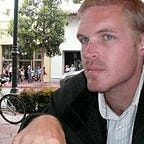Ode to a tree
A few thoughts on the death of an old friend
Greetings. This week I traveled back home for Easter and so rather than write on my normal topic of governance, I thought I would do a short piece to commemorate the loss of a friend. So this piece is a personal essay and a departure from my usual content. Next week I’ll be back with my concluding thoughts on Fukuyama’s The Origins of Political Order.
Across the street from the house where I was raised grew the oldest oak tree in town. Last week I received a call from a buddy in the middle of the day who told me it had fallen down. I long ago left my hometown but my family still owns the house across the street and I’d seen the tree often when home visiting.
Arborists have approximated it’s age at 600–800 years old. If we take the conservative estimate it was an established 100 year old oak living among a vast oak grove that covered the Ojai Valley when Columbus first arrived on the continent. It was already enormous and ancient when missionaries appeared on the California coast traveling from Mexico, building a mission only 15 miles away. And it was in it’s full glory when I first set eyes on it from a two seated stroller at 8 months old, when my parents first saw the house we would buy across the street, right as the owner was putting a for sales sign on the front lawn. It was fate.
My most cherished memory of the old oak was when it became home to a barn owl. She emerged from her hole often and stared at us, an otherworldly and astonishingly charismatic presence. To be among an owl is comparable to a beautiful woman or a gorgeous landscape, your attention doesn’t want to leave it. It feels somehow a manifested symbol of something higher and unseen. Mystery incarnate.
A time came when the kids next door, rednecks to the absolute core (forgive me I actually do like them), must have been chafed by such an elegant presence, and so went and threw rocks at it until it flew away. I still remember seeing them in the street, arms cocked and hurling stones up twenty feet into the bird’s hole and at her herself when she came out to look. I remember the sensation, quite hard to understand for a ten year old, that I was witnessing an extraordinarily destructive impulse, the desire to break something beautiful for no reason at all. I remember wishing I had the courage to tell them to stop, and searching for a reason for why they should stop, but not knowing what that would be. I looked out the window, cowardly, to see what would happen. The owl soon leapt from the hole and spreading her impressive wings, flew silently away from the kids, from my house, from her home in the tree. She sailed over her field taught, dignified, a perfect hunter. I never saw her again.
Sometime in college a major limb that represented about half the tree collapsed into the street creating an earthquake like impact that startled my parents from their bed. When they called to tell me, I processed the news as symbolic — even things which feel the most permanent, the most solid, also expire. The gash left by the fallen limb revealed that it was mostly hollow, and had been rotting for quite a while.
Several years ago the other half fell, leaving only the massive columnar trunk. It no longer had it’s impressive volume, but was still big enough for many a squirrel and bird to enjoy. Then this year, it finally fell completely, backward into the field it had nourished and been nourished by for six centuries.
The property where it lived is now an instructional farm where students come and learn about food systems. The owners have decided to let it remain where it lays, beside hay bales, a fire pit and a table and chairs where they give outdoor classes. Kids will play on it and passers by will still point and comment on it. Perhaps it will cause them to contemplate time. In California where our oldest buildings are scarcely 200 years old, our ancient trees are the closest things to the Cathedrals of Europe, causing us to consider times past, before the United States was even an idea.
I’m grateful that even though the tree no longer grows, it will still spark wonder for years to come.
Matt Harder runs the public engagement firm Civic Trust, where he helps cities strengthen their civic environment by helping residents, civic organizations, and local government work together to create public projects. Follow him on Twitter.
